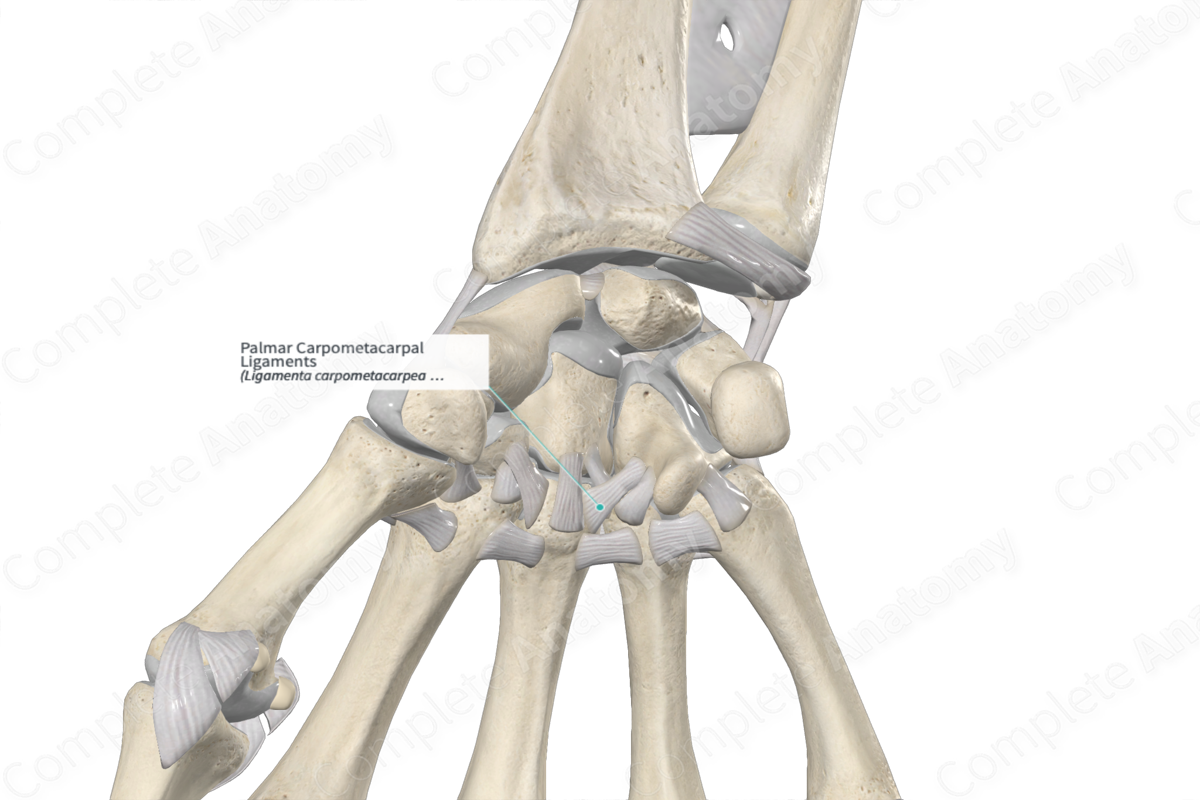
Anatomical Relations
The palmar carpometacarpal ligaments are a series of fibrous bands that attach the bases of the metacarpal bones to the carpal bones on the palmar aspect of the hand. The ligaments are arranged as follows:
—the second metacarpal has two ligaments attaching to the trapezium and trapezoid;
—the third metacarpal had three ligaments attaching to the trapezoid, capitate, and hamate;
—the fourth metacarpal had two ligaments attaching to the capitate and hamate;
—the fifth metacarpal has a single ligament attaching to the hamate.
The first carpometacarpal joint also contains a palmar carpometacarpal ligament, which extends obliquely from the ulnar side of the base of the first metacarpal to the palmar surface of the trapezium.
Function
The palmar carpometacarpal ligaments stabilize the carpometacarpal joints and permit limited gliding movements of the joints produced by the long flexor and extensor muscles of the digits.
Learn more about this topic from other Elsevier products




